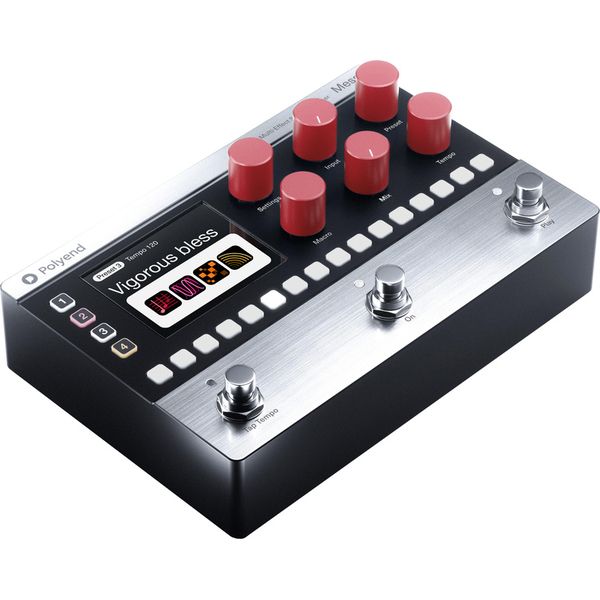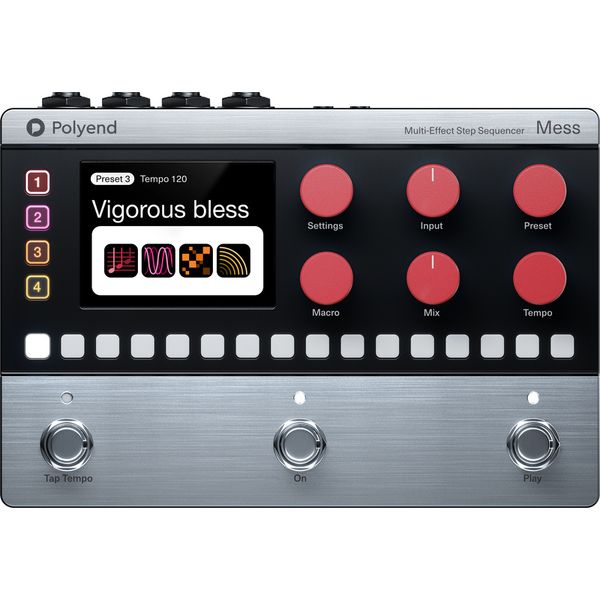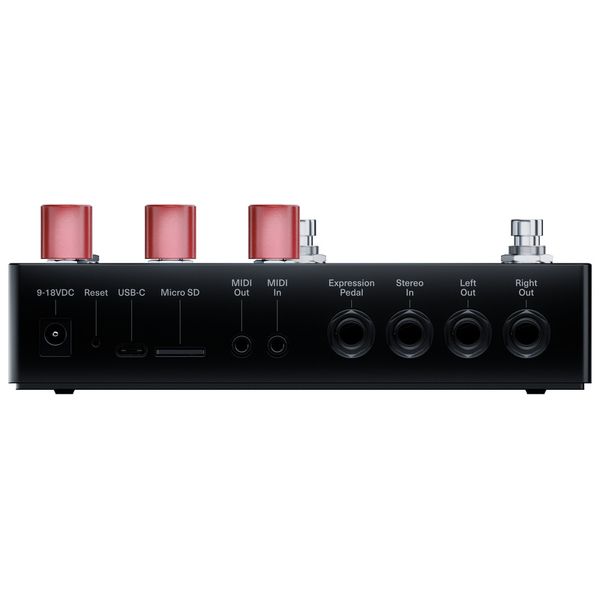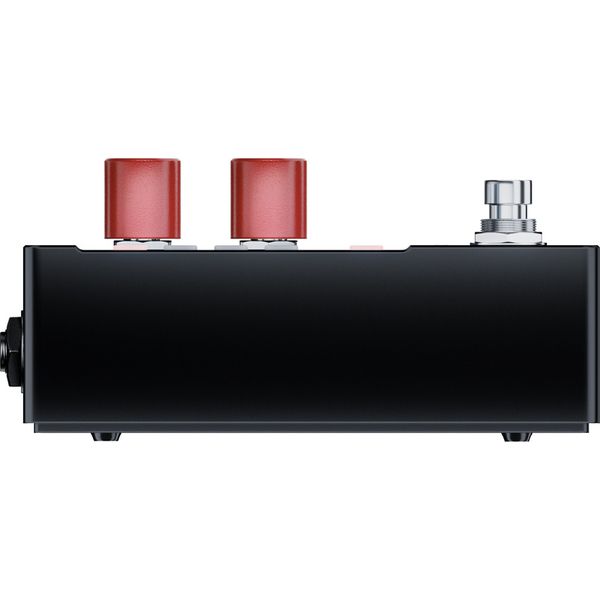Wenn man für 600 eur ein Gitarrenpedal kauft, sollte man schon erwarten, daß die Basics halbwegs durchdacht sind. Aber mit Firmware 1.0 ist das nicht mehr als ein Sounddesign-Bastel Pedal.
Die Gehäuse und Materialqualität ist absolut top. Da gibt es nicht zu beanstanden. Die Bedienung ist halbwegs intuitiv und man kommt schnell klar. Nur:
Die Gain Struktur ist komplett undurchdacht. KEINER von den 4 Effekt Blöcken hat eine Ausgangslautstärke. Was soll das?
Das heisst in der Praxis, wenn man mit dem Input Knopf eine Eingangslautstärke gewählt hat und damit z.b. ein Overdrive Effekt ansteuert der eine bestimmte Lautstärke (Threshold) braucht, um überhaupt zu zerren, und dann das Pedal auf Bypass schaltet, ist das trockene Signal nur noch halb so laut. Das passiert auch, wenn man beim Sequencer Effekte nur an bestimmter Stelle aktiviert.
Das Selbe mit parallelen Effekt Blöcken. Hat man eine Mono Signal Input und hat 2x2 Effekt Blöcke parallel (Signal geht zu FX 1 und 2 und das selbe trockene Signal an FX 3 und 4) sind die Effekte auf 3 und 4 1/3 so laut wie 1 und 2. ???
Auf jeden Fall ist man dazu verdammt, die ganze Zeit die Lautstärken der Effektblöcke über Mix, FX Input Gain anzupassen, um nicht zu laut oder zu leise in den nächsten Effekt zu senden. Macht keinen Spaß und funktioniert auch nicht wirklich.
Die Effekt Algorithmen sind toll und man kann interessante Kombinationen erstellen. Sogar der Overdrive klingt wirklich rund.
Midi und Midiclock funktionieren sehr gut. Allerdings gibt es keinen Midi CC, um das Pedal auf bypass zu schalten. Während eines Stückes die Presets zu wechseln, kann ich auch nicht empfehlen. Das braucht ca. 1 sec. bis es geladen ist.
Also wenn man das Pedal nicht auf der Bühne nutzen will und nur Sounddesign Sachen macht, ist das mit Firmware 1.0 irgendwie zu gebrauchen. Für den Bühneneinstz muß noch deutlich nachgebessert werden.











)
)
)
)




